Path of the Midnight Sun is a hybrid of Visual Novel and JRPG that tries to combine the strengths of both genres. Born as “Midnight Sun”, a rom hack for Fire Emblem 8 that was canceled in 2017, the project was revived as Path of the Midnight Sun in 2019. A successful Kickstarter campaign and a couple of years in development turned this former SRPG into an entirely new beast with hand-drawn 2D-art, an orchestrated soundtrack, and completely revamped gameplay.
Not a novel start
Tropes and clichés are the safety nets for a world that tries to be different without alienating a player right from the start. While I do think that some of these classic construction kits, like the omnipotent magic weapon and a world in the unfortunate path of a meteor, might still work, there are a selected few I’d love to see go extinct. One of these is the amnesiac guy or girl. A person that is supposed to be knowing everything that surrounds him or her – but just can’t. This strikes me as unimaginative at best or lazy at worst.
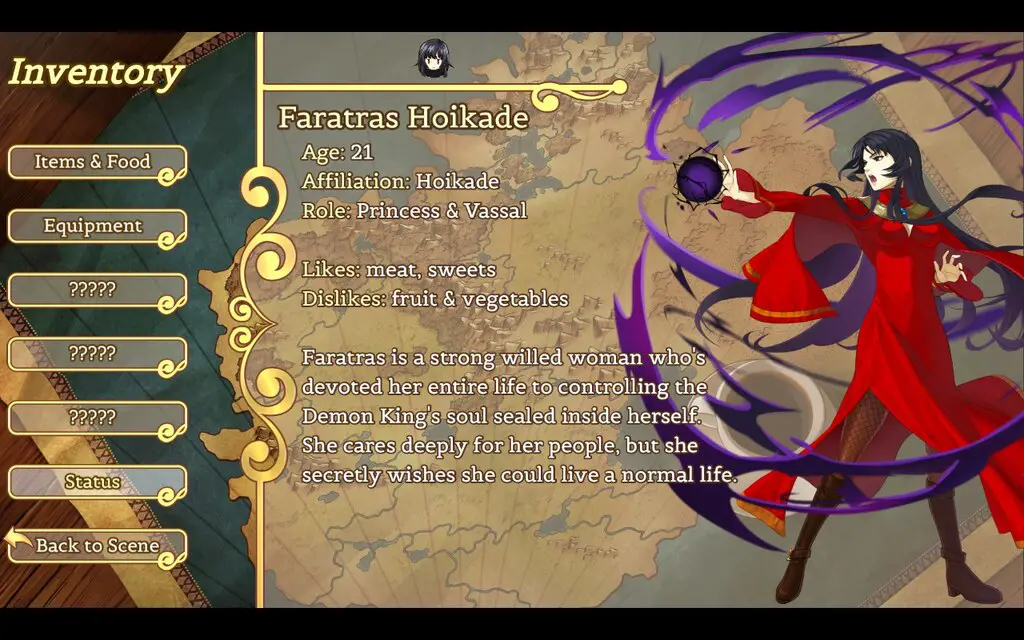
This rather unhappy-sounding paragraph might foreshadow what is about to come next. You start seeing the exceptionally beautiful world of Path of the Midnight Sun through the eyes of an amnesiac guy who is called Suzaku. Luckily, he is not alone or otherwise you wouldn’t even know his name. A blind priestess called Shiori is sitting at your side, showering you with helpful tutorials and information you knew already but just forgot. You are a captain on the mission to find the vassal and gather information about some cult activities.
Now this is the interesting part and where I stop bickering. Granted, it is still not too uncommon but over the course of the game, I came to enjoy the overarching plot. A vassal is a host for a demon king, The Demon King, an immortal being of unimaginable power that wrought havoc to your world before finally getting sealed into the body of a child, now grown woman and princess, Faratras. The combination of her inner strength and a magical seal is what keeps this cruel being at bay.
By seeing the game through her eyes, and hearing her thoughts and problems, I felt much more invested in what was to come. Still, even Suzaku starts to become more and more interesting as he struggles with visions of violence and evil, unsure if these show the past or a blink into the future. Combined with his lack of knowledge, it is clear that his inner turmoil is the stuff for some really meaningful inner monologues. However, he never aspires to Faratras’ heights. She is clearly the person I found most compelling and, to my surprise, the one I found the most relatable.
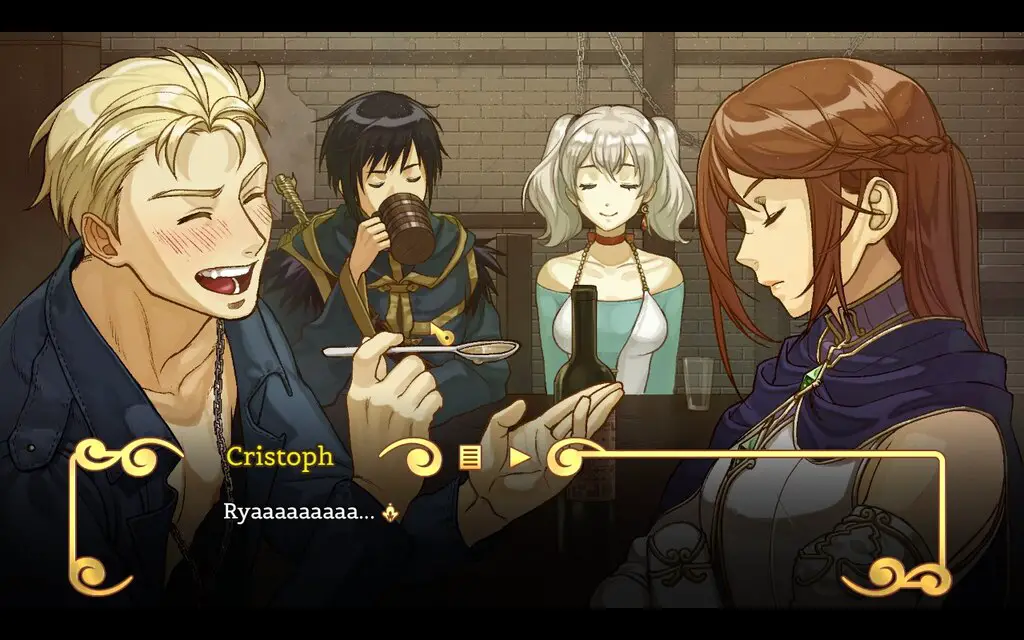
Aside from these two there are other characters you are going to meet, recruit and talk to. Some are likable and very well-written, while others, unfortunately, feel like another pull of the trope card. Certain dialogues felt a bit off sometimes as if one does not correctly hear what the other has to say and simply answers with a sentence that makes sense in an overall context. Over the course of the game, you’ll likely get to some branching narrative options but from my experience, they often had little or actually no impact on the story at all so I simply went with the answer that was best for my party.
The best answers provide an increase in affinity or sanity. These are both important stats that come with some unique and sometimes unfortunate side effects. As a former Fire Emblem Rom and Visual Novel-RPG-Remake you can be sure to expect romancing options with some delicate but actually very well-done and drawn outcomes. Sanity obviously reflects your mental state, but what it actually does is to cripple your combat capabilities by reducing mana generation, making it harder and tougher to progress in fights to come.
This is thrilling in theory, but all it did was force me always to pick the best option, the one that offers the most empathetic, understanding, or helpful solution to any issue or dilemma. It felt like having a lawful good character that is punished for his wish to engage in some role-playing. I wouldn’t say that this is wrong, but it lacked freedom of choice, as debuffing my party doesn’t actually sound intriguing.
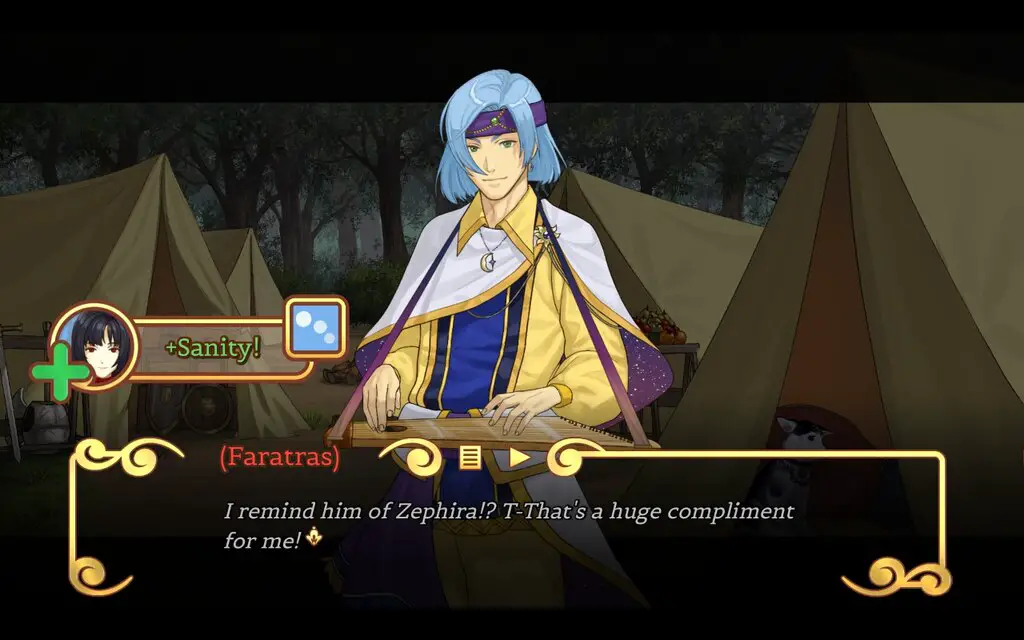
As neglectable as some of the dialogue options seemed, it was always a pleasure to actually listen to them. Path of the Midnight Sun has voice lines for over 50 characters and some of them are nothing short of brilliantly spoken. Again, if I had to pick my favorite, I’d choose Faratras. Her voice ambiguously reflects authority, sorrow and empathy. Overall it is a nice addition and something you rarely encounter in an indie title.
Muddying the waters
The visual novel part of the game plays exactly like you’d expect. Click around in first-person mode, speak to characters or investigate some of the beautifully drawn backgrounds. As soon as combat is inevitable, things start to change. Combat itself is fought in old fashioned jrpg-style where you initially can’t see your party and look at whatever stands in your way. However, to enter combat, it is mandatory to progress a tactical map where monsters and men are shown as chibi-like figurines. This style suits the overall map engagement pretty well.
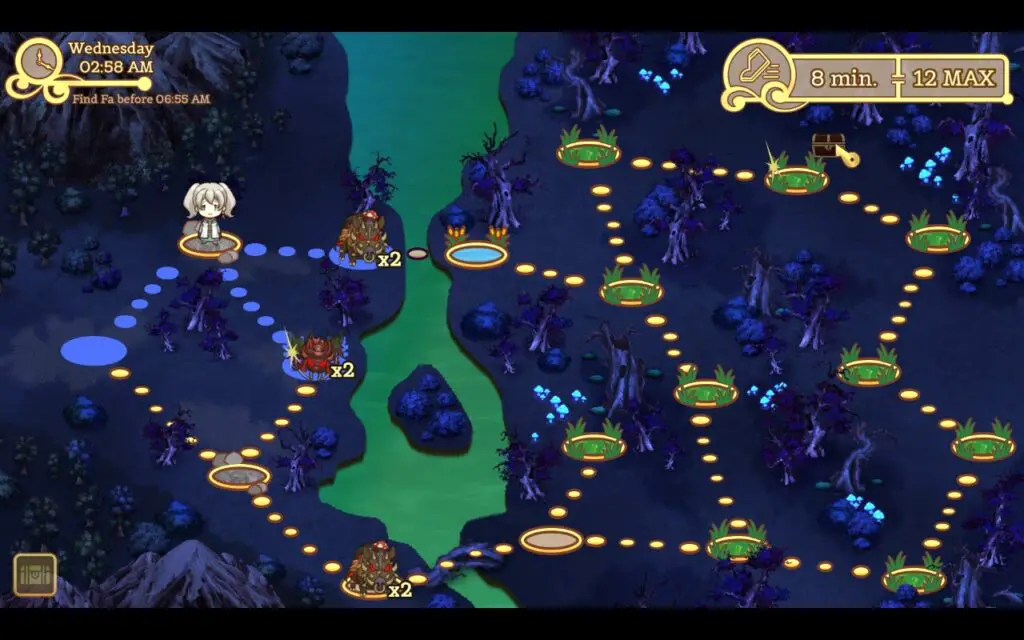
The map is always divided into multiple checkpoints, and the player moves between them. Often times enemies will do the same which leads to a fight whenever the player touches these monsters or other hostile entities. Some of these checkpoints host special buffs and debuffs which either affect the attacker or the defender. The unit that moved into another is always treated as the attacker. There are also options to find hidden treasure chests and other intriguing valuables on the field. Searching for them does, unfortunately, take time. As does everything else.
Literally every action in the game consumes time, may it be traveling, moving on the map, or fighting. This adds some sense of urgency to certain missions and I found this very engaging most of the time. I can, however see why many people dislike this, as it is counterintuitive to the reason why people start playing turn-based games in the first place. Granted, there is the option to select from a wide variety of difficulties which leads to easier fights and less tension. However, these might still be too tiresome for people who went into the game, expecting a focus on the story.
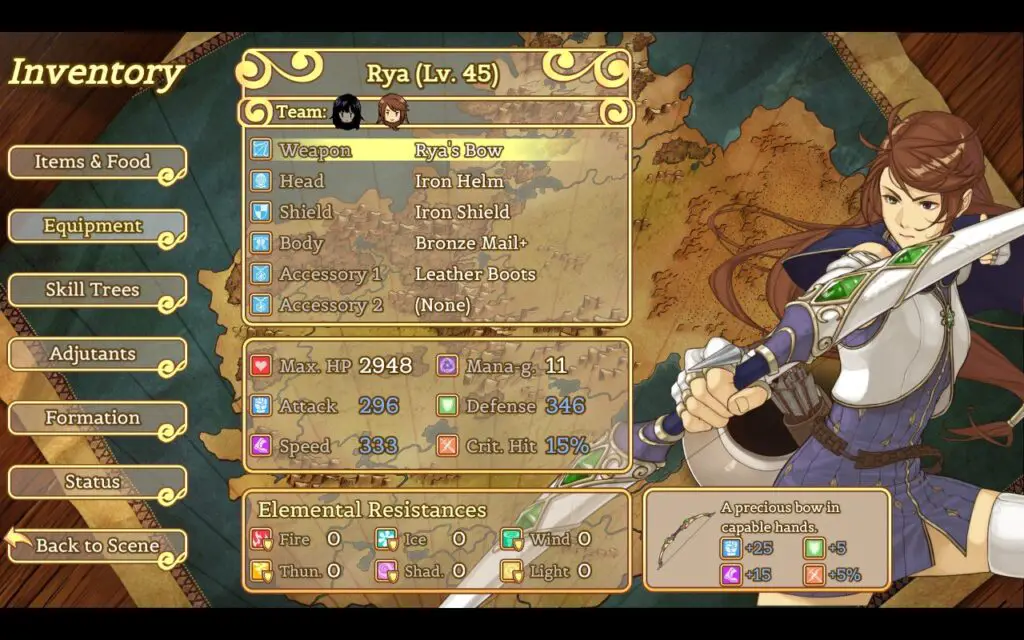
Another, in my opinion, the completely redundant feature is the hunger meter. As the name suggests, it is a way to enforce some eating habits onto your party. Everybody has a favorite food, and if people starve for too long, it starts to affect their sanity. This feels like a gold and time sink I haven’t enjoyed at all. It’s not like you have to think too much about it, but it feels cobbled together on top of an already bulging package of systems and dependencies.
The combat feels fine and enjoyable. There are no real “official” archetypes, but you can tell who is more destined to become the party healer or a knight of some sorts. The overall development is done via a skill tree. Remember that you generate mana every turn? Well, the leftover mana is stored and used to learn new spells and abilities. This leads to situations in which you drag fights out just to “farm” more mana. To counter this, the clock moves on as you fight, and mana generation is lowered after a specific amount of in-game time.
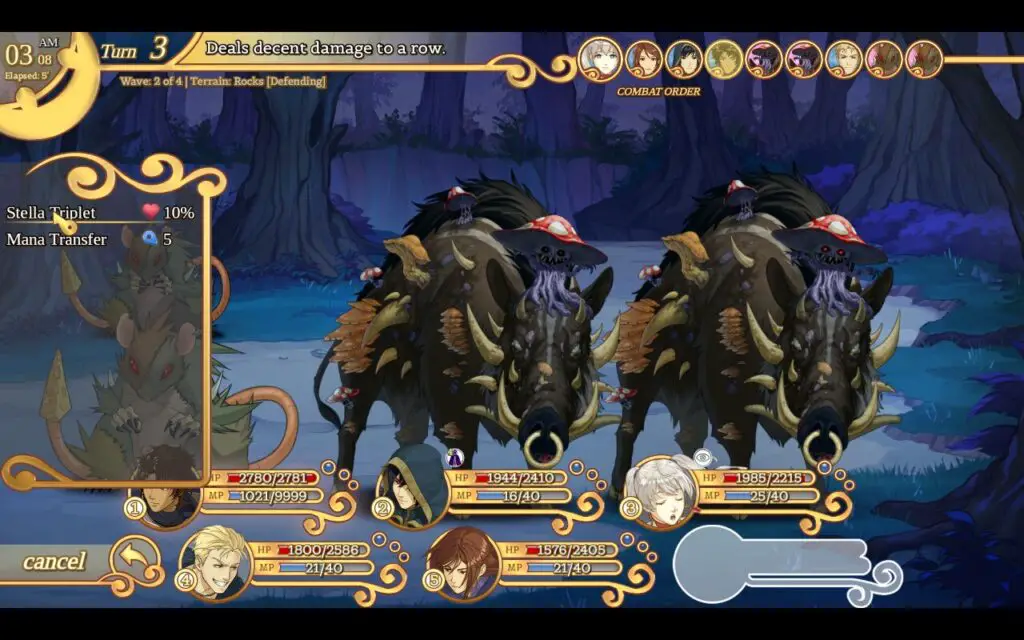
There was one addition I ended up liking way more than I initially anticipated. You’ll meet a bunch of characters that will join your group but can’t fight in your party. Instead, these individuals are assigned as adjutants. They help the party with certain passive abilities and random side effects that can vastly alter the course of a fight. I enjoyed this idea as it often accelerated fights and made them feel more diverse, countering the stale feeling of using the same abilities in the same order over and over again.
I’m all eyes and ears
The usage of 2D-animations leads to some very pretty and enjoyable cutscenes. Characters, especially when shown from the front, look amazing. The effect of nodding and moving clearly helps to counter the stiffness a visual novel naturally brings into a game. Combat effects look a bit unimpressive, but critical hits and special abilities trigger a dramatic close-up that makes everything feel much more action-oriented than it actually is.
Faces drawn from the side did feel off, as if created by another artist and mindset. The style suddenly makes everybody look very unnatural, in some cases like a different person. Sometimes I really asked myself if this was intended or just a side effect of how the engine eats up animations. Overall, if you enjoy a certain kind of anime aesthetics, you won’t be disappointed. No real disappointment should come from the fully orchestrated soundtrack as well. While it misses some really heavy hitters and tunes that stuck in my head after I finished playing, it greatly enhances the overall atmosphere and has a great variety of songs.
Final Thoughts
There are things Path of the Midnight Sun does extremely well, while others tend to get dragged along. I cannot help but feel that the vision for this game turned out to be a bit too much to handle. The decision to put everything and everyone under a time constraint will work for some, while others will pass on this game for this very reason. Fear of missing out can become a real issue which is not really something everybody looks forward to in a turn-based game.
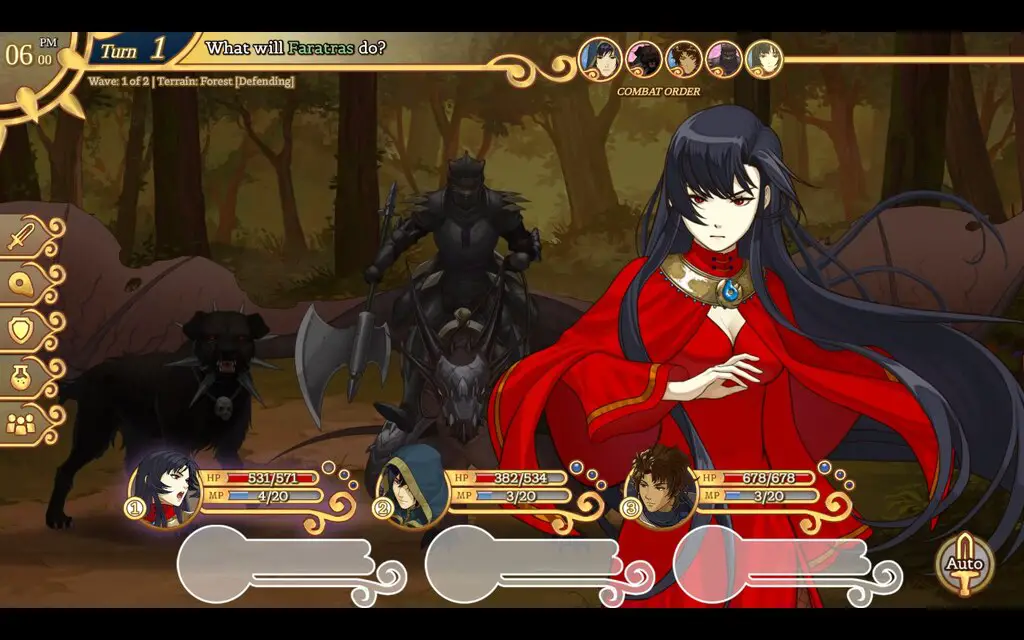
The story with all its tropes and generic placeholders, was a small disappointment, as were some of the main characters. The amnesiac guy – Suzaku – is sometimes offered the option to use sarcastic comments. Given the nature of how every system works in the game, I wouldn’t pick these, even if they were actually written well. The humor was often hit or miss, in my case it rarely was spot on. Now, this is a personal preference, and you might actually enjoy it.
Character interactions felt very authentic as soon as everybody stopped making useless comments for once and started to act with empathy. There is nothing wrong with a childish attitude if it makes sense. This is not a coming-of-age story, and I sometimes wished for more mature and complex writing. Instead, less complex mechanics would have helped create a more fluid experience. The food system could have been used in another way, like adding buffs, but it “only” comes into play when your stomach is empty, and everybody goes insane. This doesn’t feel rewarding.

The combat is very well thought out, and I was really surprised about how well the adjutant system fits into this. There was a small moment of disappointment when I realized that a character that felt very compassionate, strong, and honorable joined my group, only to be added as an adjutant rather than an actual playable character, which I would have preferred. Lastly, I think that the art and sound, especially the voiceovers, really create a beautiful and believable world, despite some minor animation hiccups.
There are many great things to be found in Path of the Midnight Sun, although I’m not sure if switching the gameplay from SRPG to this kind of hybrid was the best choice. Perhaps it would have made sense to choose between visual novel or RPG, to focus on either story or gameplay. The plot becomes better as it grows thicker and some systems, while still being a nuisance, can be neglected once you reach the arcs’ climax. This is a beautiful-looking indie game that offers a vast amount of engaging playtime and overall enjoyment if you can dismiss its shortcomings.

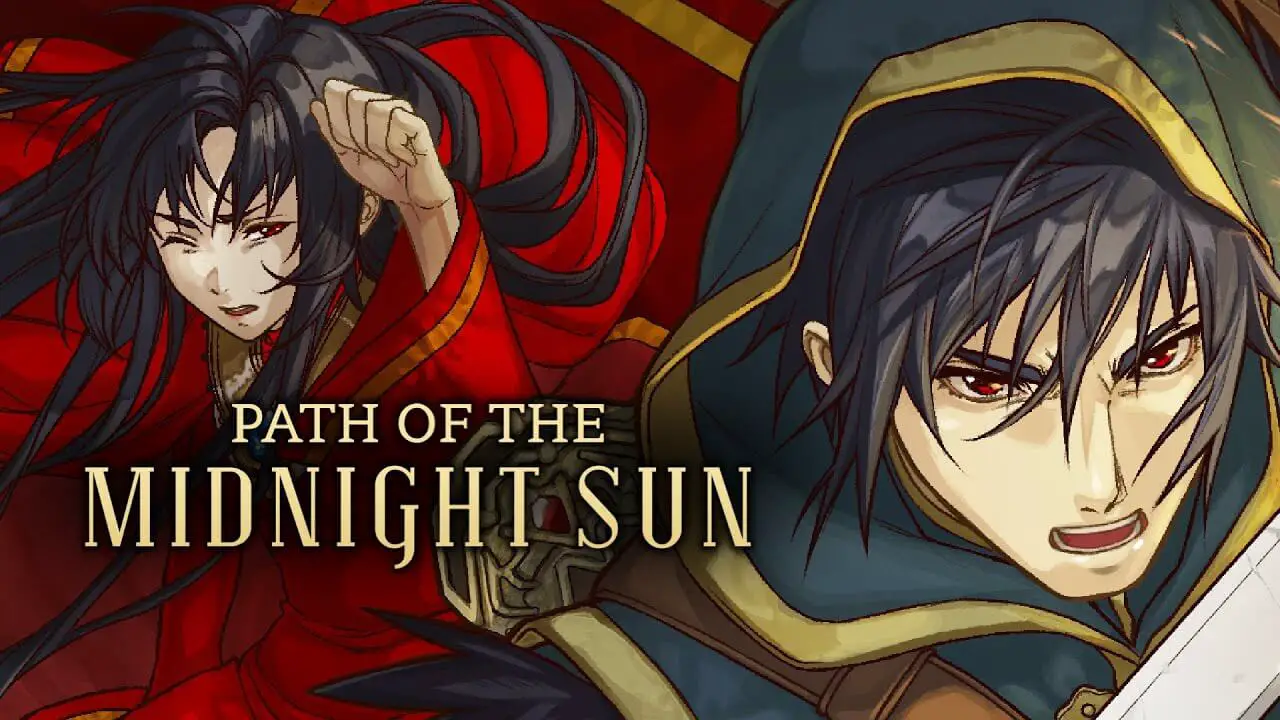






Hello Faust, thanks for the review, I really appreciated it! I wish Google notified me of this earlier, but I’m glad I found it nonetheless. I’m the creator and only developer of this game and I wanted to say that I agree with your criticism, especially regarding the food system and “wanting to add more features than the game can handle”. I wanted to create a compelling JRPG experience, but designing and programming this world from scratch for over 10k hours has been overwhelming, and in the end some features didn’t end up shining as much as I would’ve wanted. The reason the game became a VN/JRPG despite its Fire Emblem ROM hack origins was simply because of time and budget constraints, as making a Fire Emblem-like of this quality from scratch is no easy feat, especially for a solo dev. In fact, to my knowledge there are very few such games to this day (maybe we’ll make one soon? Who knows!).
I respectfully disagree with a couple points: the first being about most choices not being relevant – a lot of implications aren’t immediately shown, but most choices influence hidden parameters that then influence lines in future chapters. This was designed to have a fully customizable experience without giving the player any FOMO from not choosing the “best” answer with an immediate reward.
As for the amnesiac protagonist, while I admit that it’s a common trope still used even in AAA games, I tried my best to make it matter. Suzaku’s amnesia isn’t just a narrative tool, it’s actually reflected in every aspect of his character, relationships and inner monologue. I actually researched this topic a lot with actual psychology studies to make it matter. Still, it’s OK if you’re generally adverse to this kind of character, that’s understandable!
I think that the story plays with a lot of clichés on purpose at the beginning, just to subvert expectations in the second half of the story – I suppose you know what I mean if you played past the Finale.
Thank you for your review and have an amazing day!
-Alfred
Hello Alfred and thanks a lot that you took your time to write such elaborate and useful feedback. I can only imagine how hard being the sole dev of such an enormous project might be so kudos for all the work and effort you put into Path of the Midnight Sun!
About the lines with hidden parameters: This is something I wasn’t aware off but even then I didn’t always feel like I had a real choice or rather a choice a person in this situation would pick from. I’m fully aware that this and my comments regarding the tropyness all come down to personal preference and as such can be dismissed by everybody who revels in the lighthearted conversations. However, maybe it was a bit to drawn out. Your story has a lot to offer but those clichés you used to subvert expectations where a bit too much for my taste – or too much for a given period of time.
I hope you could still feel that I enjoyed your game and tried to make my own point of view as clear as possible. Also, “maybe we’ll make one soon? Who knows!” – I see what you (hopefully) did there.
Thanks again for sharing your thoughts and impressions as they really help to give a different perspective for everyone who might still be on the fence.
Enjoy your day and good luck with whatever you come up with next!
All the Best
Marcel (Faust)